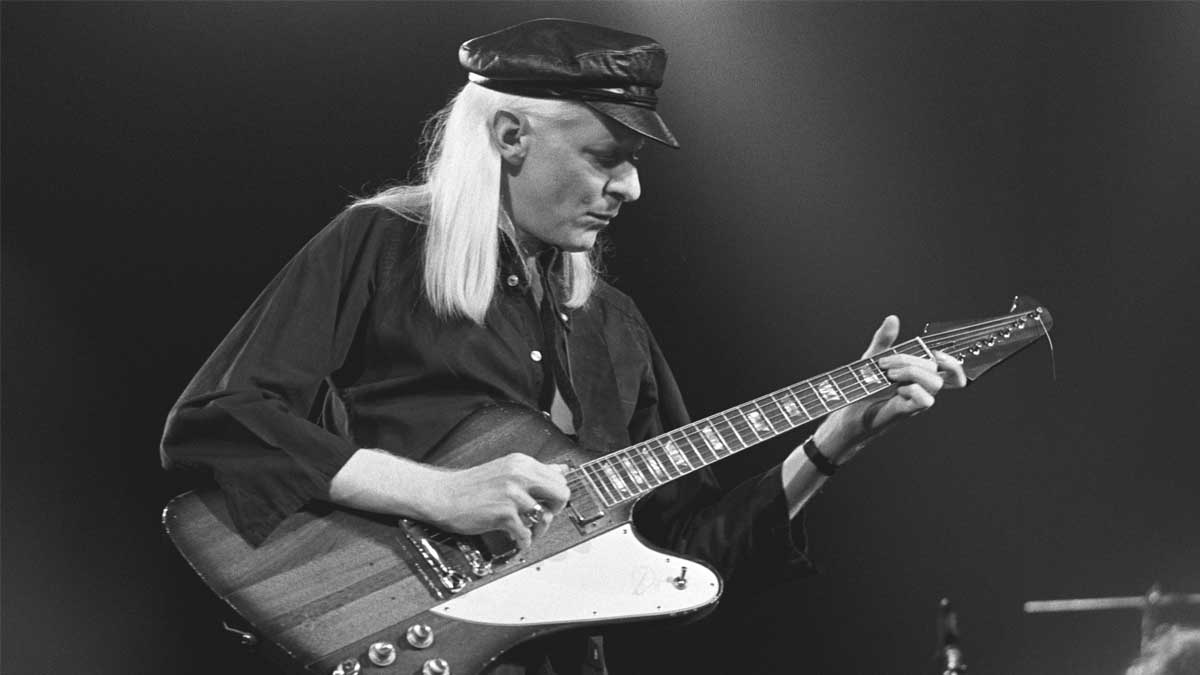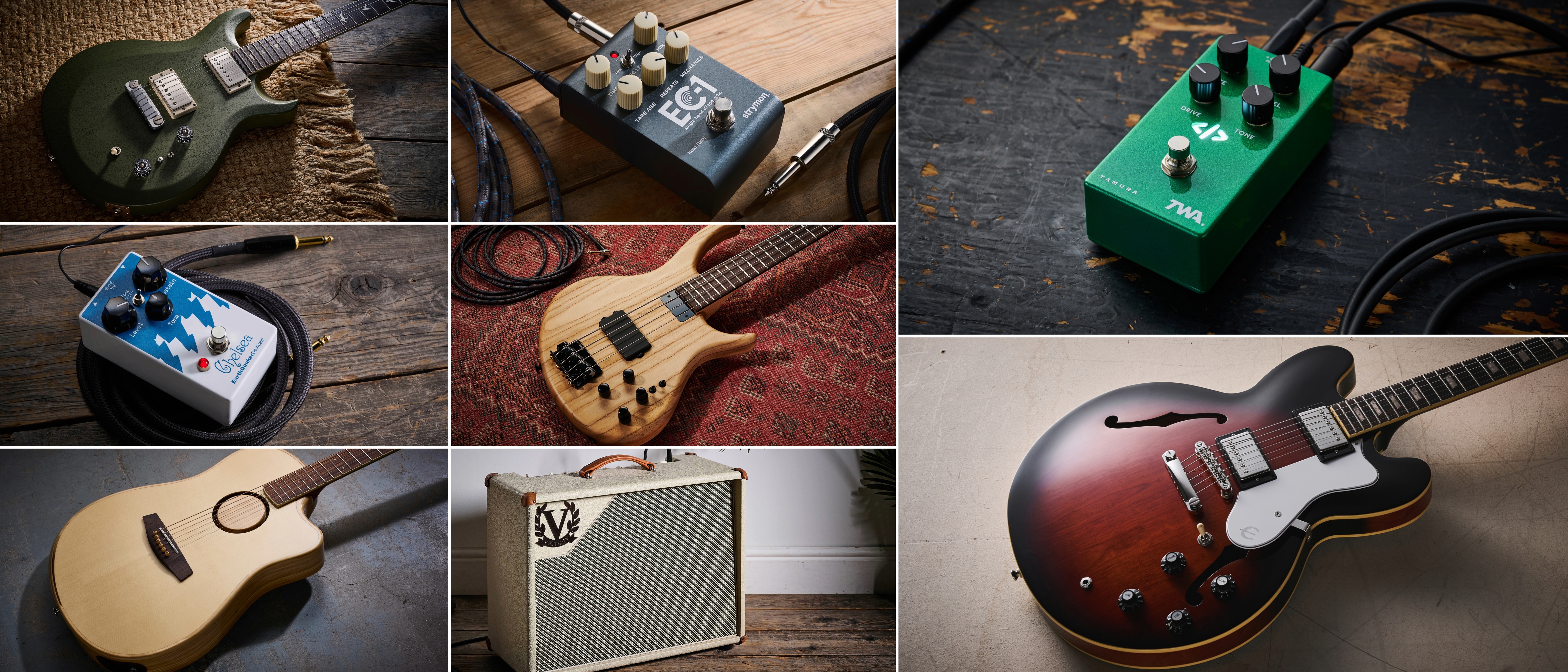Harness the attitude of Johnny Winter with this lesson in his swaggering blues style
You'll need a little fire in your belly to replicate Winter’s style, so dig in hard to these blues workouts

My favourite guitar players all have one unifying attribute: attitude! Whether that be the high-energy tapping of Van Halen, the ferocious picking and vibrato of Yngwie, or the wild blues-rock phrasing of Pat Travers, all these players do what they do with passion, guts and fire. And Johnny Winter is definitely no exception.
Johnny displays a wonderfully fluid rock technique alongside a sophisticated blues vocabulary. What makes his playing stand out is his sustain, fiery vibrato and rapid pentatonic phrasing.
Johnny was influenced by many of the usual suspects, Muddy Waters, Robert Johnson, T-Bone Walker and BB King, but was also inspired by non guitarists. Little Walter was a sensational mouth organ or ‘blues harp’ player and Johnny, captivated by his sound, transferred many of his licks and phrases onto the guitar.
Electric blues was his passion, and it was seeing artists like Muddy Waters and BB King playing live that helped him fall in love with the style. By 1967 at just age 23, he had a single and album out with Sonobeat records. However, December 1968 would be the moment that would change Johnny’s career forever.
Fellow bluesman Mike Bloomfield invited him to play a show with him at the now legendary Fillmore East in New York City. Columbia records executives were present, and within a few days of hearing Johnny play, they signed him with a whopping $600,000 advance; apparently the largest in the history of the business up to that point.
As well as being a successful solo artist, Johnny also found himself working with his heroes in the producer’s chair, on Muddy Waters’ albums I’m Ready, King Bee and Muddy ‘Mississippi’ Waters – Live.
Winter went on to record many more albums, earning Grammy nominations and releasing material right up until 2014. His ferocious sound still grabs the attention of many of today’s younger players.
All the latest guitar news, interviews, lessons, reviews, deals and more, direct to your inbox!
Our two studies explore Johnny’s sound within two up-tempo solos, the first with a straight 4/4 feel and the second a fast paced shuffle with plenty of swing. Both solos showcase Johnny’s blues-rock approach but with plenty of traditional blues vocabulary and a ton of swing to boot.
Get the tone
Amp settings: Gain 7, Bass 5, Middle 4, Treble 6, Reverb 3
Johnny was most commonly seen playing Gibson Firebirds featuring mini-humbuckers, which he favoured over PAFs as they are brighter and sound closer to a single-coil.
Low output humbuckers or single-coils will work just as well, as Johnny played with plenty of gain. Much of the tone is found in the attitude of the performance, so dig in to this one.
Example 1. Double-stops and bends with vibrato
This study utilises Johnny’s use of double-stops, quick-fire pentatonic phrases and large tone-and-a half-bends. For the bends in particular, make sure that you don’t add the vibrato too early, but hit the note and sustain the pitch. This will make the note sound more solid and give authority to your delivery.
Example 2. Swinging 12-bar with rhythmically displaced notes
There’s a lot of continuous triplet figures in this study that can make it relentless. From bar 9, the phrase over the IV chord is essentially the same thing but rhythmically displaced. Get the phrase into your muscle memory before attempting the whole line. This will make it easier to hear and feel the timing.
Phil Short is a sought-after guitarist from the UK. A stadium player, Phil is well known for his technically accomplished guitar style and has showcased his talent touring with Irish boyband Westlife. As well as touring, Phil has been a visiting lecturer at BIMM London since 2017, teaching performance, technique and improvisational skills to the next generation of guitarists. Phil is a monthly contributor for Guitar Techniques magazine, writing the blues column as well as video features on iconic rock legends.

